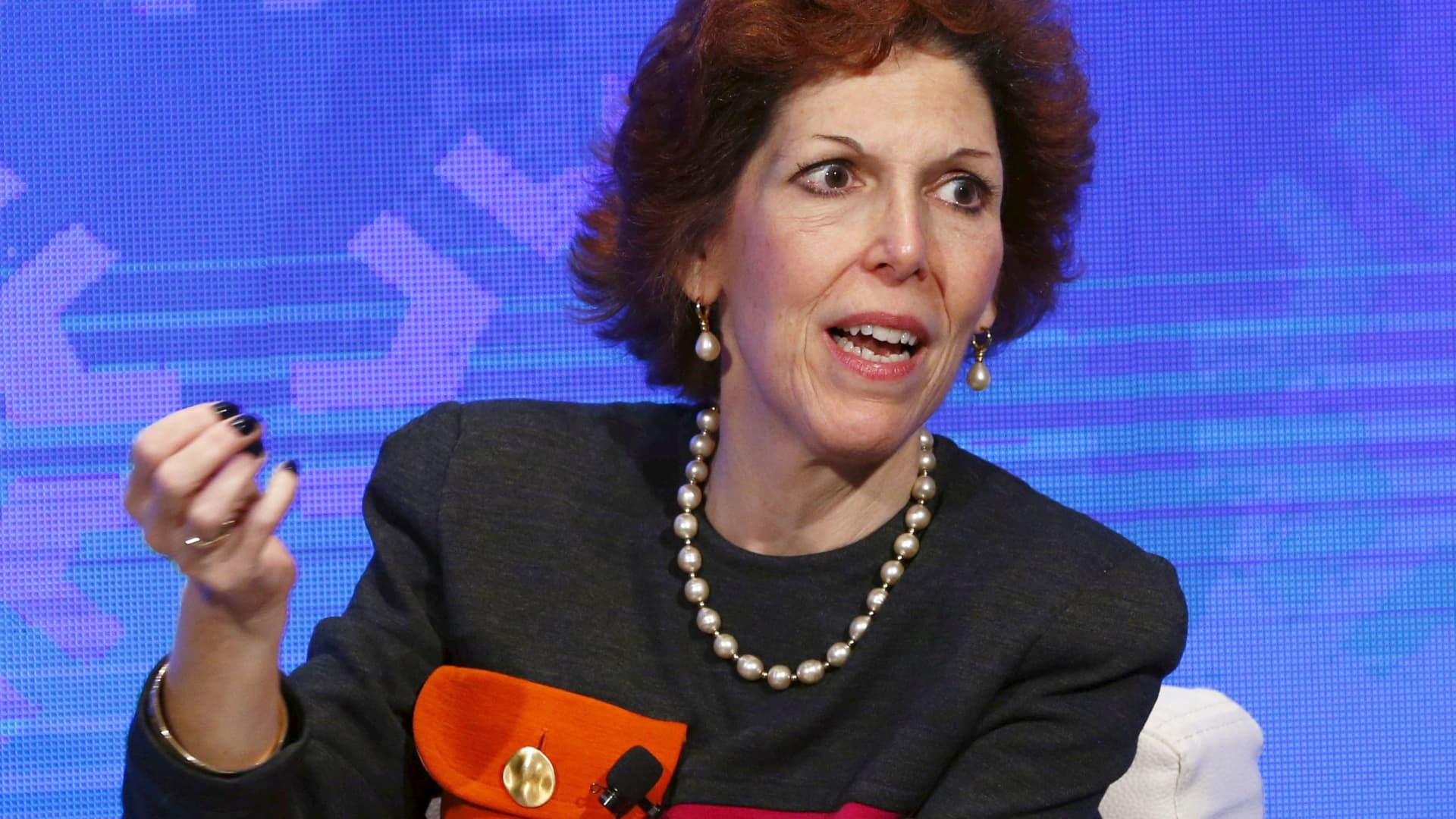
Cleveland Fed President Loretta Mester takes part in a panel convened to speak about the health of the U.S. economy in New York November 18, 2015.
Lucas Jackson | Reuters
Federal Reserve Bank of Cleveland President Loretta Mester said Wednesday that if economic conditions remain the same when the U.S. central bank meets to decide its next monetary policy move in July, she will be advocating for a 75 basis point hike to interest rates.
The Fed’s path of monetary tightening has become a key driver of market activity in recent months as the central bank looks to act aggressively to rein in soaring inflation, while acknowledging the risk that steeper interest rate rises will increase the likelihood of an economic recession.
The Fed opted for a 75 basis point hike to its benchmark rate earlier this month, the biggest increase since 1994, with inflation running at a 40-year high.
Mester — a voting member of the Federal Open Market Committee — said July’s meeting will likely involve a debate among FOMC policymakers over whether to opt for 50 basis points or 75 basis points.
“If conditions were exactly the way they were today going into that meeting — if the meeting were today — I would be advocating for 75 because I haven’t seen the kind of numbers on the inflation side that I need to see in order to think that we can go back to a 50 increase,” she told CNBC’s Annette Weisbach.
Mester said she will be making an assessment of supply and demand conditions over the coming weeks prior to the meeting in order to determine the preferred path of monetary policy tightening.
The “dot plot” of individual FOMC members expectations places the Fed’s benchmark rate at 3.44% by the end of the year, from its current target range of 1.5%-1.75%.
“I think getting interest rates up to that 3-3.5%, it’s really important that we do that, and do it expeditiously and do it consistently as we go forward, so it’s after that point where I think there is more uncertainty about how far we’ll need to go in order to rein in inflation,” Mester said.
‘Painful transition’
U.S. markets tumbled on Tuesday after a disappointing consumer confidence reading, which came in at 98.7 against a Dow Jones consensus estimate of 100, furthering investors’ jitters about slowing economic growth and the potential compounding effect of aggressive monetary policy tightening.
Mester suggested that consumers’ experience of inflation, which hit 8.6% at the headline level in May, was “clouding” their confidence in the economy.
“At the Fed, we’re on a path now to bring our interest rates up to a more normal level and then probably a little bit higher into restrictive territory, so that we can get those inflation rates down so that we can sustain a good economy going forward,” she said.
“Job one for us now is to get inflation rates under control, and I think right now that’s coloring how consumers are feeling about the economy and where it’s going.”
Mester acknowledged there is a risk of recession as the Fed embarks on its tightening policy. However, her baseline forecast is for growth to be slower this year, below “trend growth,” which she puts at 2%, as the Fed tries to moderate demand and bring it closer to constrained supply.
“I expect to see unemployment rates rise over the next two years to a little above 4% or 4.25%, and again that’s still very good labor market conditions,” she said.
“So we’re in this transition right now, and I think that’s going to be a painful one in some respects and it’s going to be a bumpy ride in some respects, but it’s very necessary that we do it to get those inflation numbers down.”
